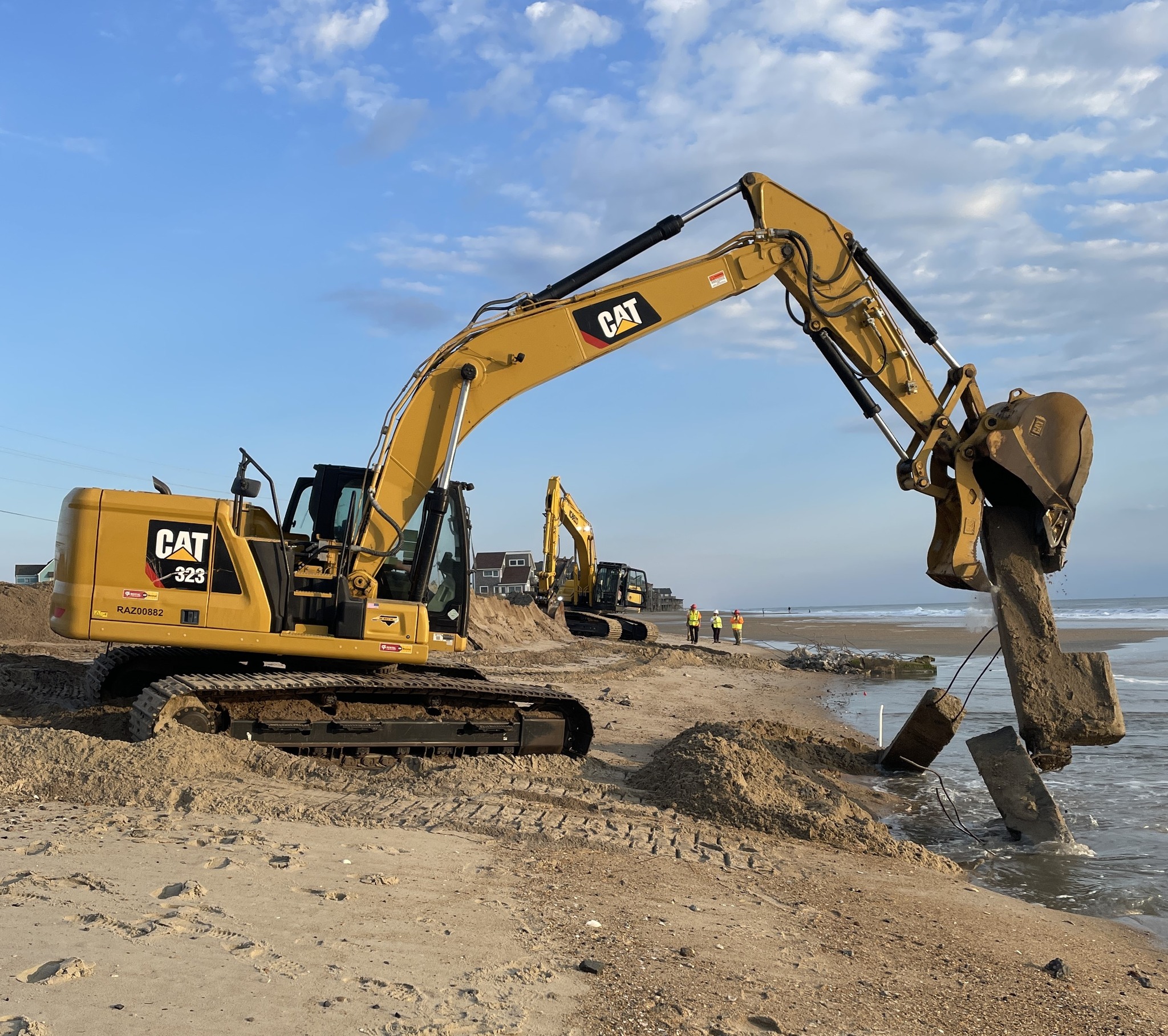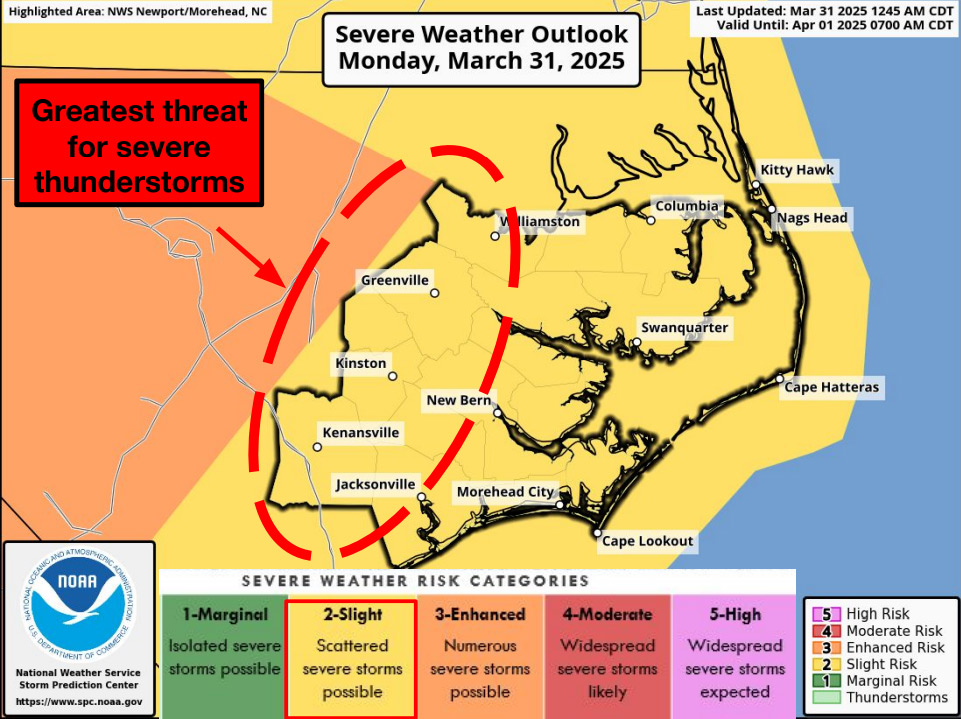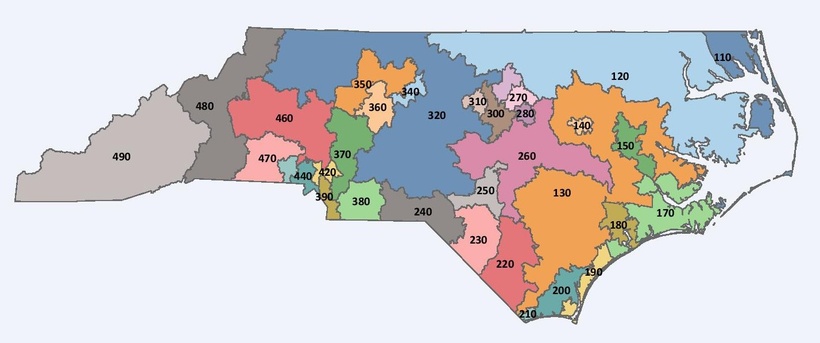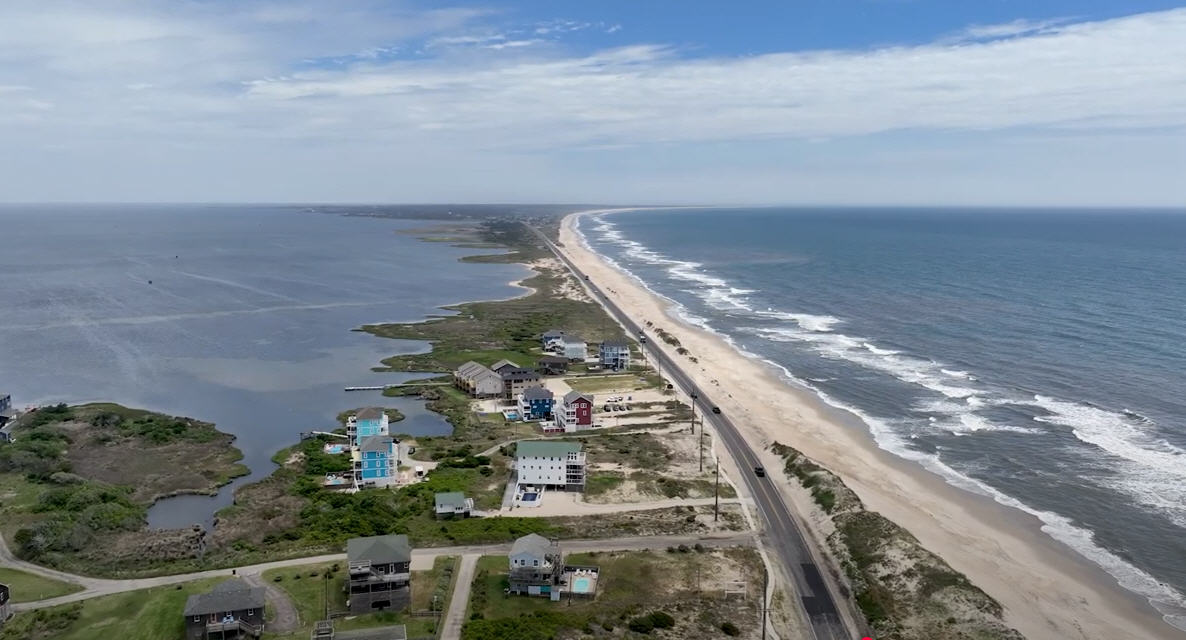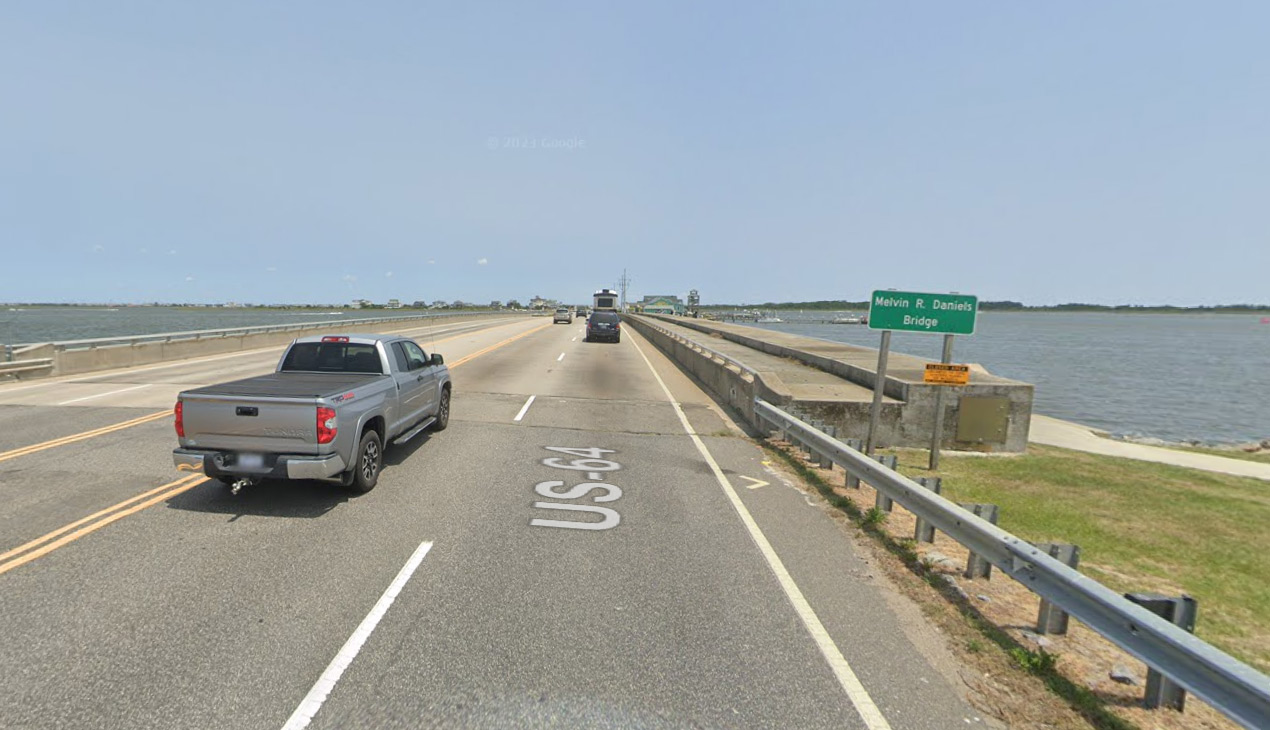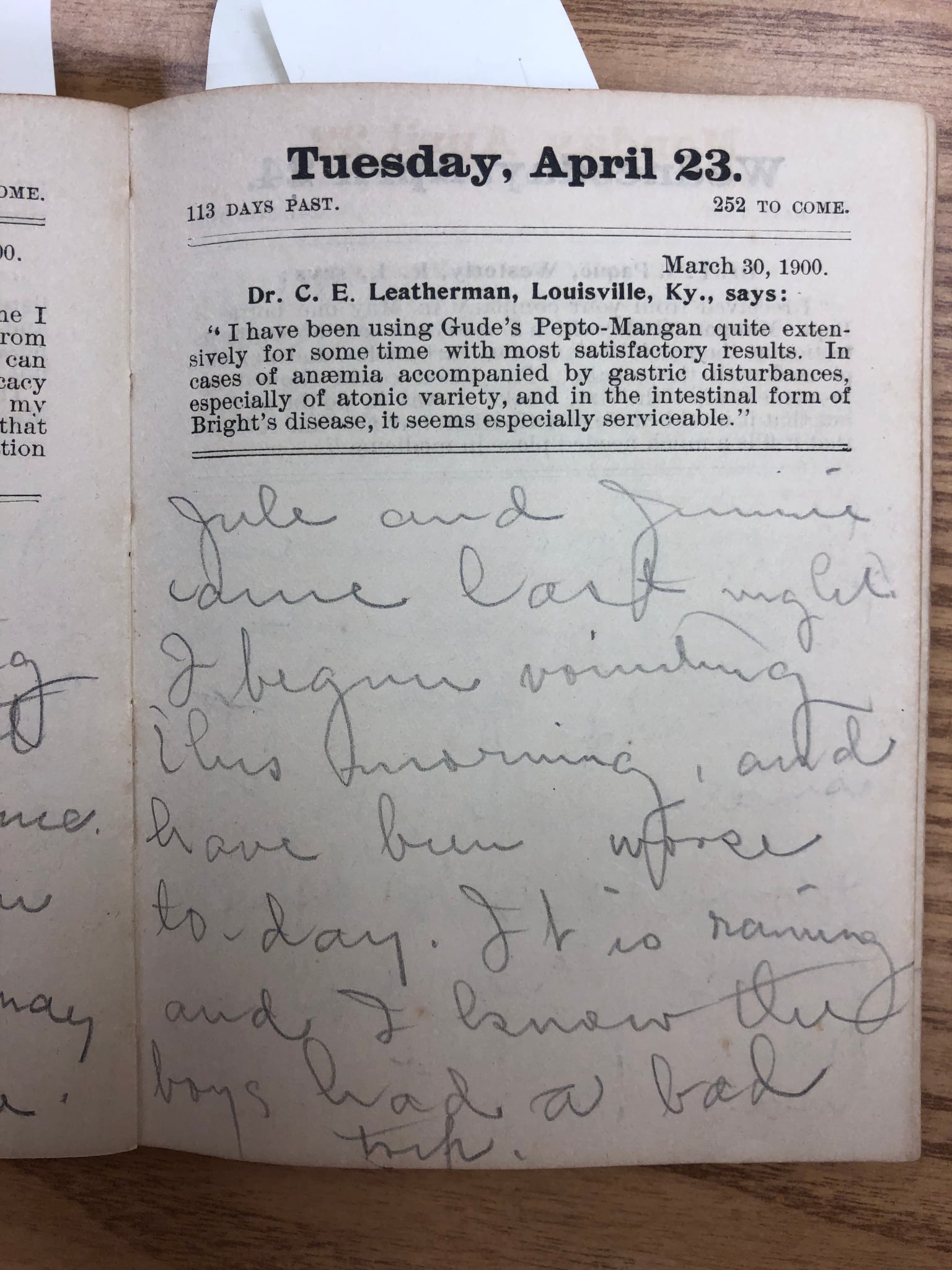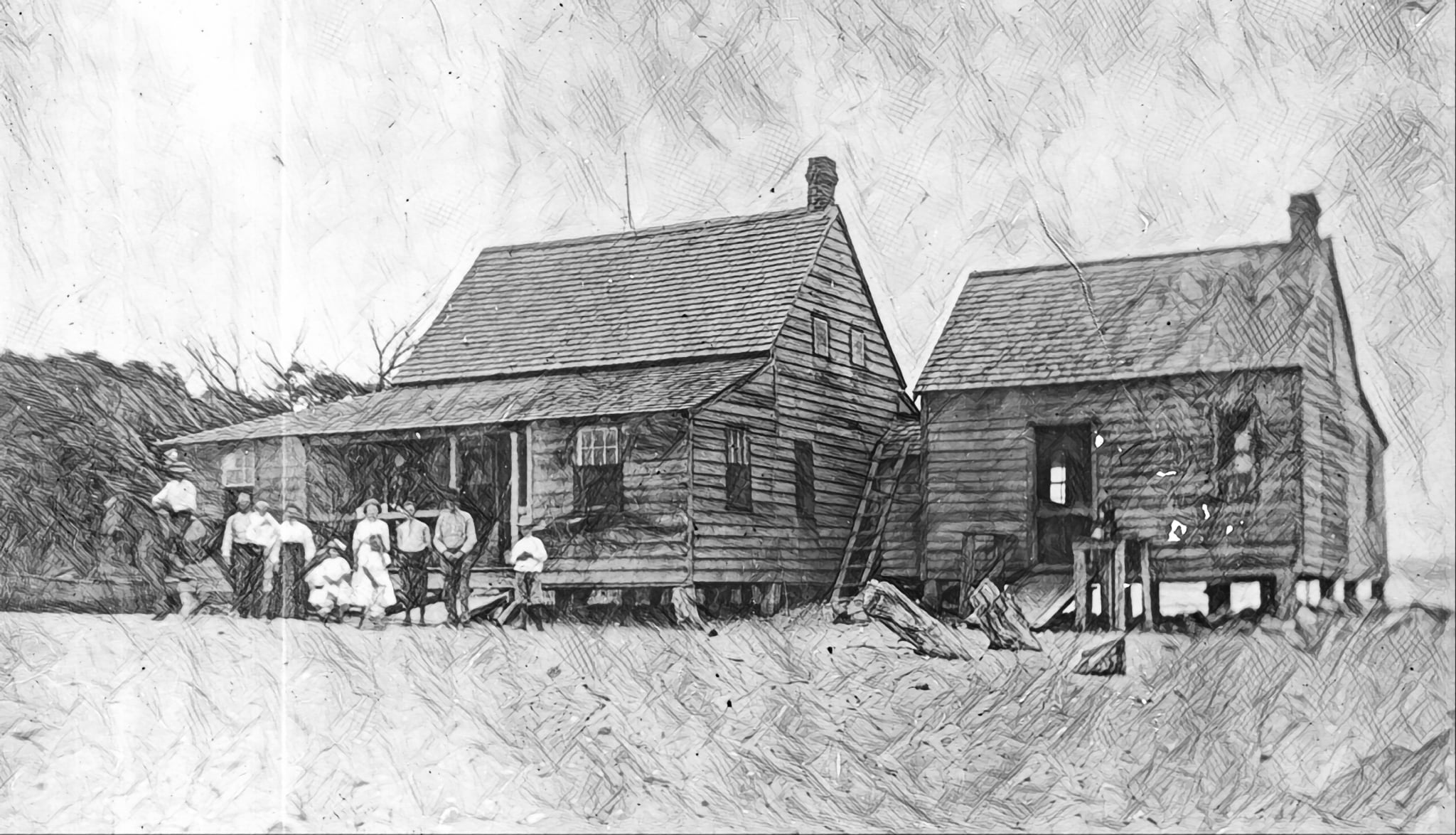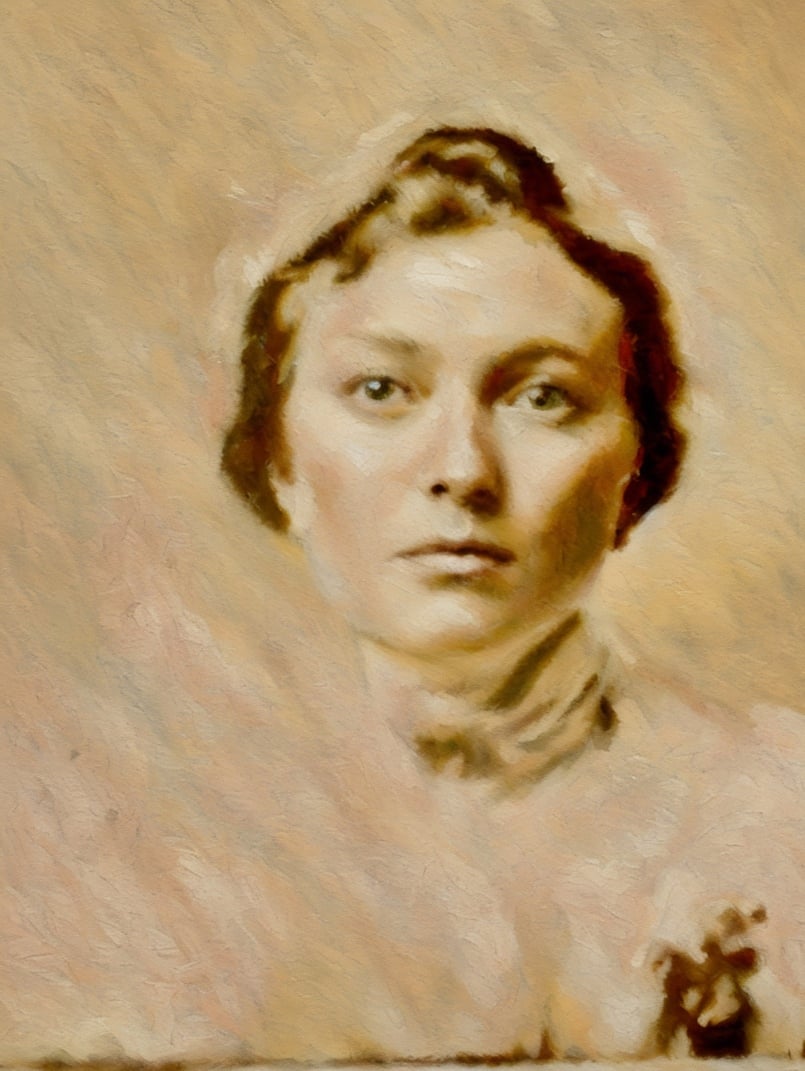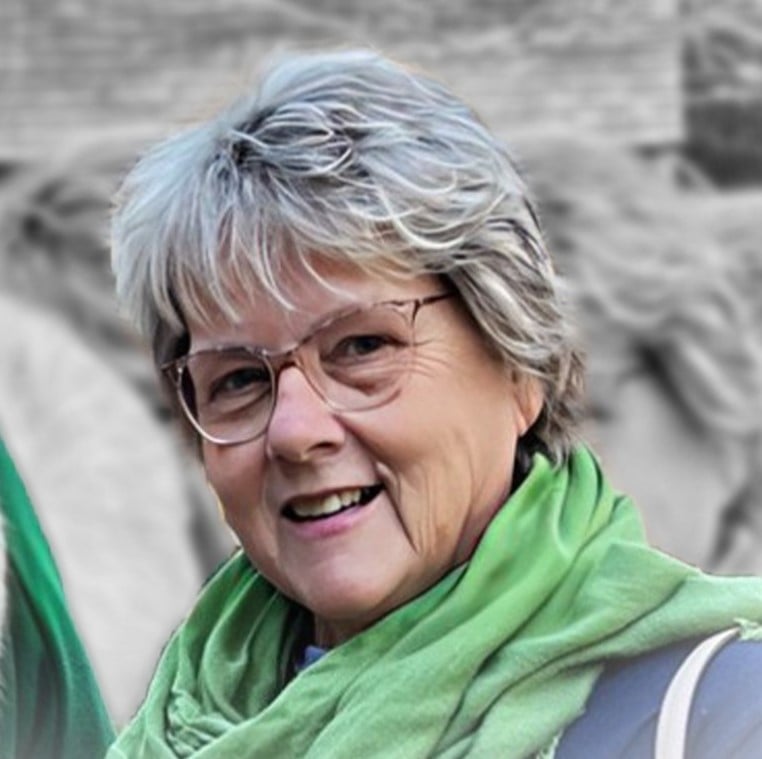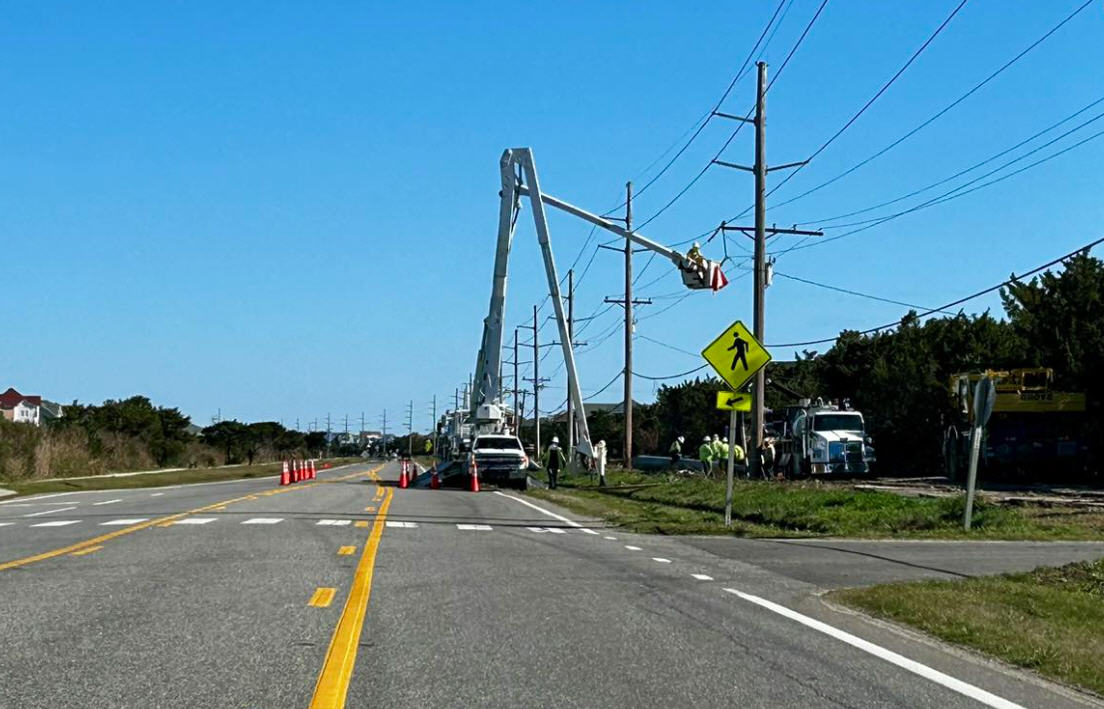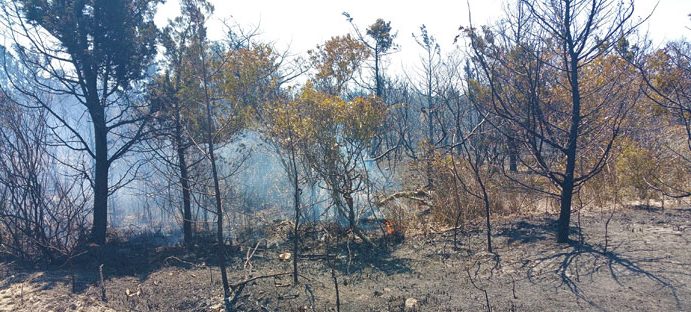Ocracoke’s historic Island Inn has a bright future, but can funds be found?

The Island Inn in Ocracoke village is a site of historic firsts and historic lasts.
The two-story structure was one of the first social hubbubs on Ocracoke Island. The site served as a lodge for the Independent Order of Odd Fellows when it was built in 1901, (an organization that was first documented in England in the early 1700s), with Ocracoke’s K-12 school operating on the first floor until a new school was built in 1917.
It was also one of the island’s first modern hotels when it was repurposed as the Silver Lake Inn after World War II, (later becoming the Island Inn). Doubling as a dance hall and social gathering spot for islanders, the stately building with two wing additions offered all the hot modern amenities of the time for Outer Banks visitors, including indoor plumbing and electricity.
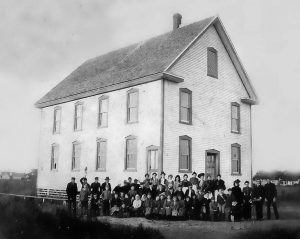
Today, the Island Inn, (or Odd Fellows Lodge as it’s interchangeably called), is one of the last pieces of Greek Revival architecture on Ocracoke Island, and it’s located on one of the last undeveloped stretches of land that borders N.C. Highway 12 in this four-square-mile village.
The expansive parcel, which is next to vacation homes, condos, shops, and restaurants, is more or less barren, with just the original 1901 lodge remaining on the grassy property.
The tireless board members and volunteers with the Ocracoke Preservation Society (OPS) want to keep it this way, but there have been years of hurdles, (and obstacles ahead), that make the restoration of the Island Inn a daunting undertaking.
Ken DeBarth, President of OPS, has been involved with the project to purchase the Island Inn since the beginning.
The site had remained a longstanding hotel and restaurant until the 2000s, but by 2010, personal, financial, and banking issues sent the Island Inn into foreclosure until an extended family member purchased the inn. By 2015, it was on the market again.
In 2016-2017, the OPS was presented with a plan by a group of concerned Ocracoke citizens to purchase and preserve the site. The complicated sale, (which involved three separate closings in a day), went through in May 2018, and the OPS secured funding of one half of the mortgage payments from the Ocracoke Occupancy Tax Board, and the other half from the Ocracoke Township Tourism Development Authority.
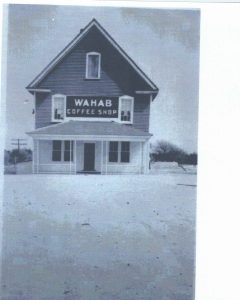
Though it took more than a year to plan and piece together the sale, arguably, the hardest part of the project was yet to come – the restoration of the lodge itself.
Situated at ground level for its entire lifespan, the Island Inn had seen untold cycles of flooding over the past 12 decades. By 2018, it had fallen into severe disrepair, with the “new” additions to the property – and namely the wings that were added after World War II – completely unsalvageable.
“We demolished all the really, grossly-deteriorated stuff. There was just no way that it was going to be recovered,” said DeBarth. “There was so much history there. It was a huge restaurant, it was a premier place to stay on the island, and everybody on the island had worked there in some capacity at one time or another.”
“A lot of people were heartbroken because [the wings] couldn’t be saved, and they had so many memories tied up in it, but it was in terrible shape, and beyond saving… But the thing that’s interesting is that the part that was built in 1901 was solid.”
The OPS subsequently razed and removed the unsalvageable portions of the property, including both wings, the kitchen and apartment portions, and two small outbuildings, leaving the original 1901 structure standing alone. Hyde County helped to clear the debris away for free, and once the property was a clean slate, the OPS could get to work on renovations – a project that was originally estimated to take 5-7 years.
“The next phase of the project was to raise the building off the ground level,” said DeBarth. “It was actually lower than the street level, so every storm we’ve had since 1901 flooded the inside floor.”
There were several small wrenches in the works that initially slowed down the progress, but then Dorian hit Ocracoke on September 6, 2019, and all future plans came to a standstill.
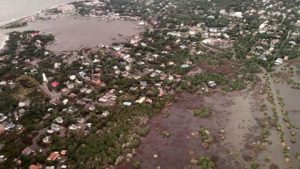
“Dorian was just six months of survival,” said DeBarth. “We had no visitors, so no income. A lot of people didn’t have a place to live. There are a lot of historic homes on Ocracoke Island, and the old ones were built on the ground. Those are the ones that served as lower-income housing for teachers, policemen, or support staff for the hotels and restaurants, and those are the ones that we lost.”
“They all got destroyed. We tore down about 90 houses, and about 40 houses were raised,” said OPS Board Member Peter Vankevich.
At the time, the OPS had received some money to start installing public restrooms at the site and to begin the raising process, but getting the community out of survival mode took precedence over the restoration.
“We were working on getting those things going, and suddenly there are people that are homeless and living on sofas, and we couldn’t tie up contractors,” said DeBarth.
“People needed to have their houses repaired,” added Vankevich, “and we were obviously a distant second to that [need.]”
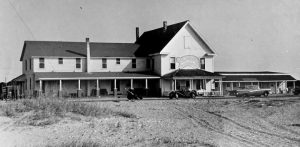
Just when Ocracoke Island was starting to get its head above water after Dorian, another natural disaster hit in the form of the Coronavirus pandemic, which delayed work yet again.
But progress was nevertheless made over the past two years. In April of 2021, the OPS completed the repair and replacement of the foundation beams, and completed lifting the original lodge five feet in the air, protecting it from future damage.
Temporary public restrooms were installed at the edge of N.C. Highway 12, and in recent months, work has begun to replace the roof, which will further protect the inside of the building.
“The next phase is to tear off the other half of the roof, and get that all fixed up, and then get the shingles on both sides, and that’s going to be about a $50,000-60,000 piece of the project,” said DeBarth. “And then after that, the next step is going to be the outside siding and windows. Then once we get that all boxed and ready, we can start doing interior work, and improving access, and things like that.”
The grand plan for the Island Inn is impressive and multi-faceted.
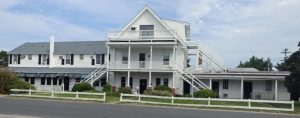
The interior of the building itself will be transformed into a Visitors’ Center, with offices on the second floor for area non-profit organizations to set up shop. “We have a lot of pie-in-the-sky ideas for the interior space,” said DeBarth. “There’s a little efficiency suite that we can make available to folks who visit to teach classes to the EMS, or provide services to the fire department, or who come to work at the school, because in the summertime, there are no vacancies, and people might sleep in their car when they come [to the island.]”
The outside grounds will be a public greenspace, where folks can have community gatherings, or hold weddings or special events, or just take a breather during an Ocracoke exploration to relax at a picnic table with a food-truck lunch.
One side of the property will be bordered by Ocracoke’s famous fig trees – with signage identifying the six different species that are native to the island – and the port-a-potties will be replaced with stand-alone and flushable restrooms. Public parking will also be added, (with 8-10 spots on two sides of the lodge), and across the street from the site – where the OPS recently received a land donation of four lots from the McDermott family – visitors can enjoy a wild and untouched landscape in the heart of the village.
“We have a huge infrastructure support problem here on the island,” said DeBarth. “We keep attracting more and more people, and it’s hard to even find a place to use a restroom.”
“And parking is a big issue. Ocracoke is interesting because we have this quaint little rural [culture], but all of our problems are urban problems,” said DeBarth. “Traffic, noise, trash, affordable housing, water on the road – it all [connects] back to infrastructure.”
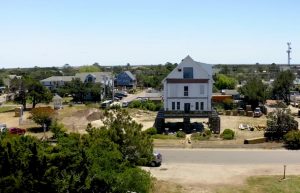
Having an expansive public space in the heart of Ocracoke, (with visitor information, parking, restrooms, picnic area, and room for events), will be a huge asset for the community, and progress on the project continues in earnest, post-Dorian.
“We’ve gotten several grants from Outer Banks Community Foundation, and they have been a huge help,” said DeBarth. “And the Ocracoke Tourism Development Authority has supported us from the get-go.”
The OPS also has a local contractor ready to assist with the lengthy renovation, which is an intricate job simply because it’s a historic endeavor, and all work needs to meet the Department of Interior’s guidelines for historic restoration.
But the issue now is finding the funds for the months and years ahead. Purchasing the property was the first step, but donations are continually needed to complete the restoration of the structure and the development of the landscape, and that process is both multi-pronged and difficult.
Funds are piecemealed together through grants, donations, and fundraisers, and every dollar counts.
“Donations are critical,” said DeBarth. “If somebody gives us $20 bucks or $50 bucks, it’s not going to pay for the roof, but it will help us to pay for dirt to plant the trees, or it will help up pay for ropes for the fence – every dollar supports this project.”
“Some grants require matching funds, too,” added DeBarth. “When we go and talk to somebody who says ‘We’ll give you $100,000 If you can match $100,000,’ that $800 raised from a bake sale counts, and that $10 dollars that somebody puts into the donation jar at the [OPS] museum is doubled.”
OPS Board members estimate that roughly 30-40% of the overall project is complete, which means that there’s still a long way to go.
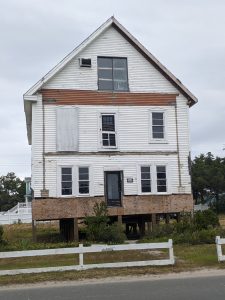
But even though the future remains hazy, with donations dictating the timeline of the project, the fact that such a huge and historic corner of Ocracoke village is permanently preserved is already a feat, and a giant step in the right direction.
“The value of this property, for somebody else, is in the land. A developer could come in and easily put in four McMansions, and the building would be a tear-down if it was not preserved,” said DeBarth. “Whenever people say, ‘How come you’re not going faster?’ I jokingly say, ‘Well, it’s better than a Wawa.’”
“If we won the lottery, we could start right now, and be done in a year, or a year and a half,” said DeBarth. “But we have to raise the money a little bit at a time.”
HOW YOU CAN HELP
Donations are always accepted online and can be made via the OPS website, which also features an online gift shop, a quilt raffle, and more.
ABOUT THE OPS
The Ocracoke Preservation Society is a non-profit, community-based organization dedicated to the preservation of Ocracoke Island’s rich historical and cultural heritage. Founded in March 1983, OPS has maintained a free admission museum at the century-old David Williams House since 1992, and has assisted with other landmark projects and events in the Ocracoke community over the past four decades, including the 300th-anniversary event of the death of Edward “Blackbeard” Teach in 2018, and the 2018 purchase and restoration of the Island Inn property.




